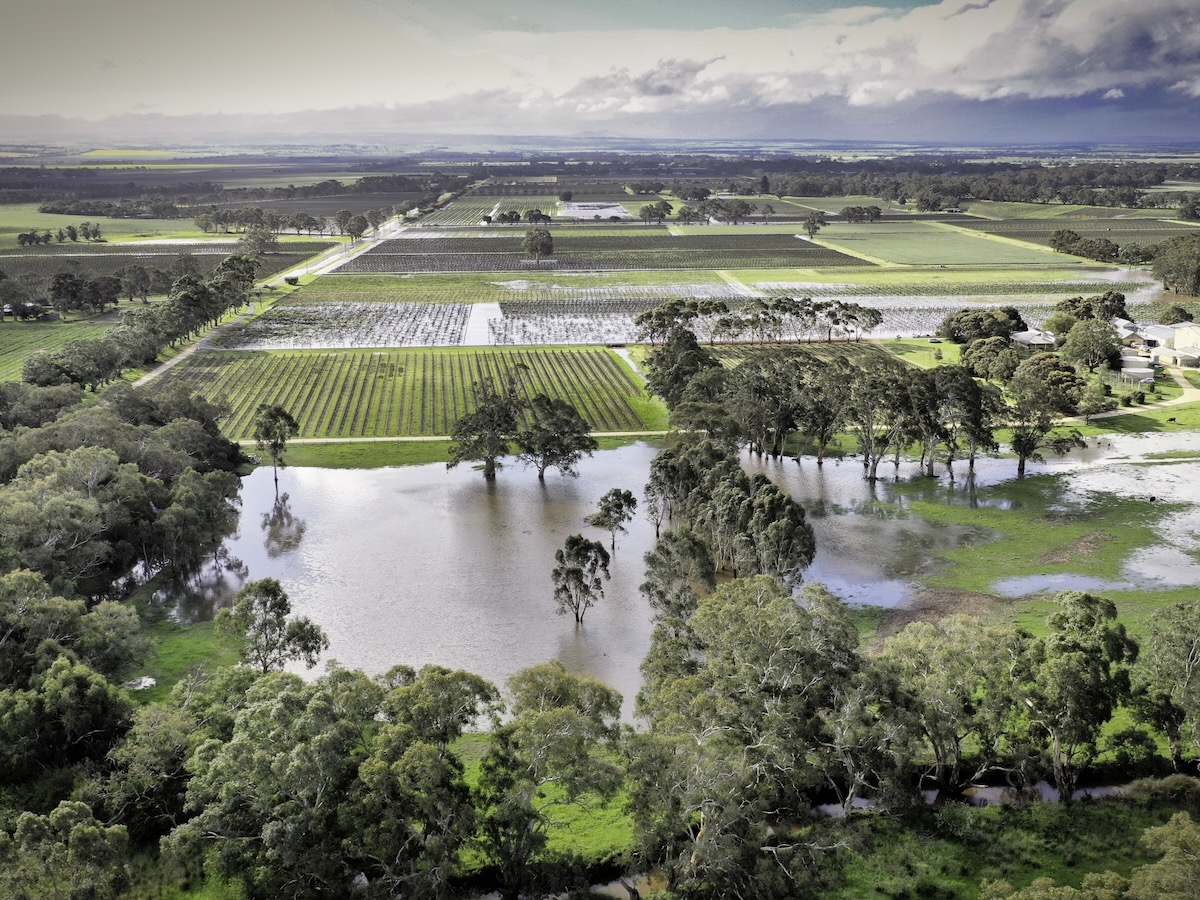Langhorne Creek is a unique wine-grape growing region due to its cool, maritime climate, a result of its proximity to the 600 square kilometre Lake Alexandrina at the end of the Murray-Darling River system and beyond there, the great Southern Ocean.
The breezes that come across these vast bodies of water are known as the Lake Doctor, cooling the vineyards during summer and autumn growing seasons, promoting longer ripening and retaining natural acidity in the grapes. In winter those same maritime conditions help mitigate frost damage.
To place Langhorne Creek in context: our mean January temperature is 19.9C with average 1520 heat degree days, placing it as significantly cooler than McLaren Vale (21.7C, 1910 heat degree days) and the Barossa (21.4C, and 1710).
In winter and spring, another unique regional environmental phenomenon often occurs, with the flooding of the two rivers than dissect the region, the Bremer and the Angas, both flowing out of the Adelaide Hills towards the lake and sea. The high-water flows of the Bremer are tamed and redirected across many of the older vineyards by a series of diversion weirs, levee banks and floodgates, providing excellent deep irrigation for the following growing seasons.
Courtesy of the local river flows over time, Langhorne Creek’s soils are predominantly deep, alluvial sandy loams that vary in colour from red-brown to dark grey, with patches of black, self-mulching clays.
The characters of the region’s wines are profoundly influenced by their environment, giving a unique elegance to the styles that have made Langhorne Creek a place with significant tradition and an exciting future as winemaking and consumer trends evolve.
